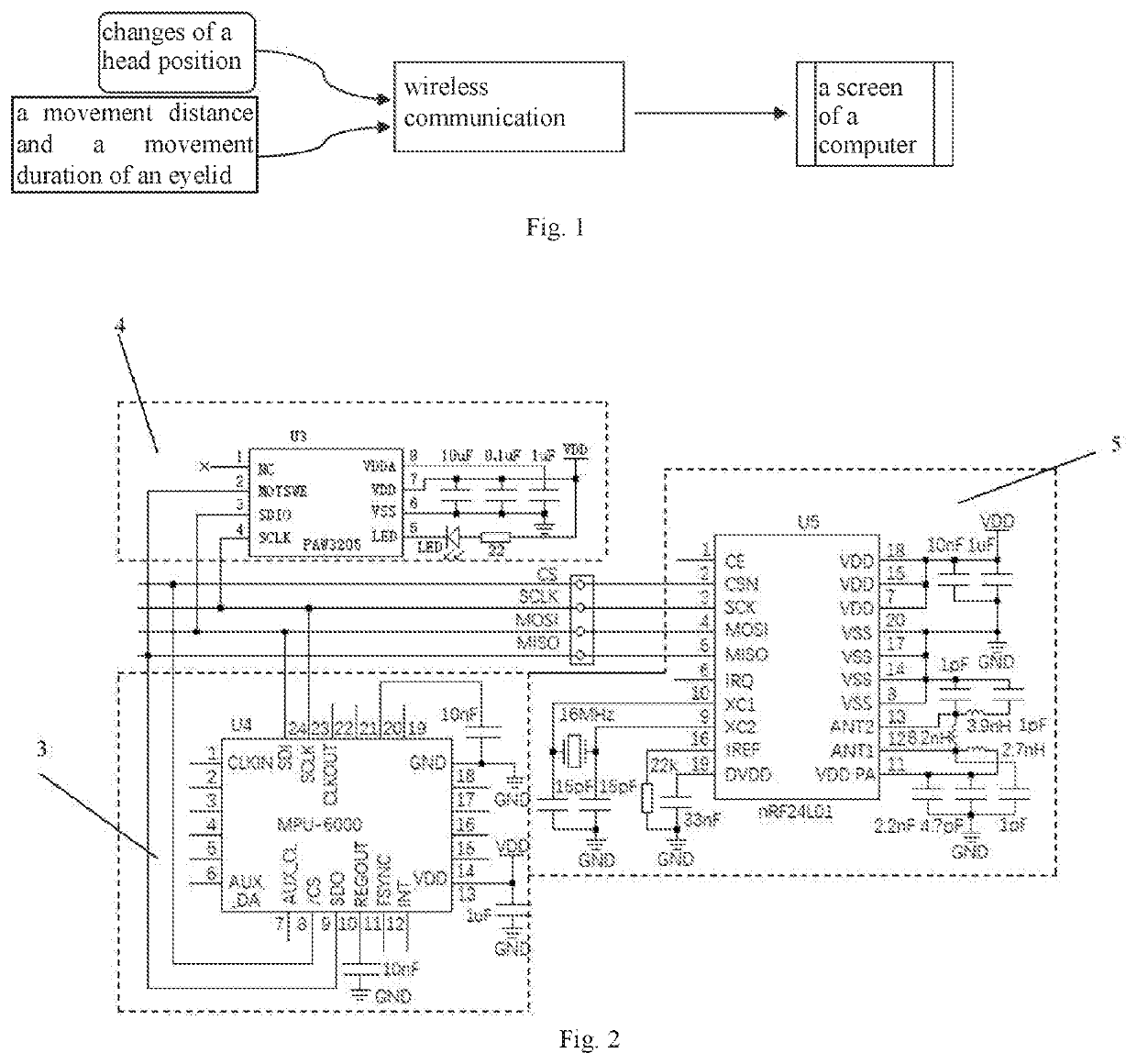Wireless virtual mouse
a virtual mouse and mouse technology, applied in the field of wireless virtual mouse, can solve the problems of unresolved cursor positioning and confirmation (i, ) and the lack of armless people's computer input devices, and achieve the effects of small physical energy consumption, convenient portability, and wide application rang
- Summary
- Abstract
- Description
- Claims
- Application Information
AI Technical Summary
Benefits of technology
Problems solved by technology
Method used
Image
Examples
embodiment 1
[0023]Referring to FIG. 1, a working principle of a wireless virtual mouse of the present disclosure is to convert relative changes of a head position and a movement distance and a movement duration of an eyelid into electrical signals, then wirelessly send the electrical signals to a computer to complete cursor movement and confirmation (e.g., mouse-click or selection) of a computer mouse.
[0024]Referring to FIGS. 4 and 5, a wireless virtual mouse of the present disclosure comprises a head-mounted device 1 and a wireless virtual mouse body 2. In this embodiment, the head-mounted device comprises glasses 1, and the glasses 1 comprise a frame 11 and two temples 12. The wireless virtual mouse body 2 is detachably connected to an upper end of the frame 11 and the temples 12 through a bracket 5. The wireless virtual mouse body 2 comprises a power socket 221, a power switch 222, an eyelid blinking sampling port 211, and a head motion sampling port 233. This solution is adaptable to variou...
PUM
 Login to View More
Login to View More Abstract
Description
Claims
Application Information
 Login to View More
Login to View More - R&D
- Intellectual Property
- Life Sciences
- Materials
- Tech Scout
- Unparalleled Data Quality
- Higher Quality Content
- 60% Fewer Hallucinations
Browse by: Latest US Patents, China's latest patents, Technical Efficacy Thesaurus, Application Domain, Technology Topic, Popular Technical Reports.
© 2025 PatSnap. All rights reserved.Legal|Privacy policy|Modern Slavery Act Transparency Statement|Sitemap|About US| Contact US: help@patsnap.com


